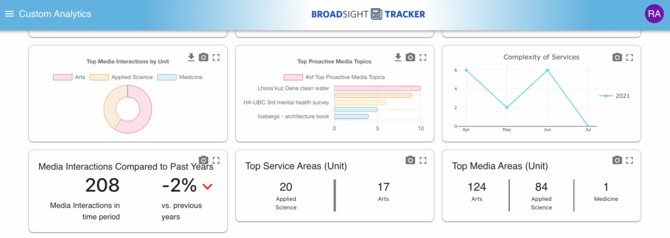PR Metrics that Matter: Beyond Ad Value Equivalency and Share of Voice
Is your team still using PR metrics like Ad Value Equivalency (AVE) and Share of Voice (SOV)? If yes, it might be time for a change.
While AVE and SOV have been industry standard for decades, they fail to capture the true value of PR efforts. AVE prioritizes cost over impact, while SOV focuses on output quantity instead of message quality.
Relying on these outdated metrics can make it challenging for PR teams to justify their value in a broader organizational context.
In the current economic climate, companies are seeking ways to trim budgets, putting PR teams in competition for resources with marketing and sales departments which may appear more visibly robust. It’s now more crucial than ever to move towards better measurement standards that can be tied back to business and operational objectives.
The good news is that more effective ways of PR benchmarking are available to use today. Metrics that go beyond surface-level assessment not only affirm PR’s indispensable role in organizational success, but also provide crucial insights to guide efficient decision making.

Measure what Matters: Cornerstones of PR Benchmarking
PR teams do a lot of behind-the-scenes work that forms the bedrock of strategic communication. While activities like building media relationships and crisis preparedness may not always be immediately visible, they play a crucial role in maintaining a consistent and positive organizational reputation.
Quantifying these unseen efforts as measurable metrics can go a long way in establishing credibility with internal stakeholders. It not only showcases the PR team’s business value, but also reinforces their role as indispensable contributors to the organization’s overall success, by putting a spotlight on both the tangible and intangible aspects of their contributions.
To do even better, teams should also benchmark how they’re performing internally. Gaining a clear understanding of the outcomes of your time and effort provides insights that can be used to strategically allocate resources for enhanced performance.
A robust PR measurement strategy should empower teams to not only demonstrate the value of their efforts but also continuously improve and optimize their contributions to the organization’s success. The end goal is to drive meaningful outcomes, allocate resources efficiently, and ultimately, support greater success in achieving organizational goals.
PR Metrics You Can Start Tracking Today
At the University of British Columbia, where Broadsight Tracker was developed, the media relations team navigates a variety of PR strategies and topics every month.
The following are just a few key metrics that have been invaluable in helping the team enhance performance and collaboration to achieve key outcomes.
Services by Type
A press release may demand more time and effort than a brief comment. Other activities like media training happen behind the scenes but are critical to ensure smooth external communication.
Understanding and measuring the differences in the types of PR activities being run every month offers a more comprehensive overview of the team’s performance and capacity.
Services by Team Member
Not every team member is always chasing stories. Some drive value by referring stories to colleagues or driving campaign strategy. Acknowledging these contributions ensures that all forms of value creation are recognized and accounted for. This approach allows for better team cohesion and optimizes resource allocation based on individual strengths.
Complexity of Service
Understanding the complexity of services in a given month is vital. You might be neck deep in crisis management during a certain month. If all goes well, no coverage ever appears but the work has had great impact. It’s important to recognize and measure the unseen services provided by the team each month.
Proactive vs. Reactive Media Interactions
How much of your media activity is driven by your team? This metric offers critical insights into the PR department’s ability to set the agenda versus simply reacting to external events. Understanding this provides a direct line of sight into your impact on narrative control and the strategic direction of your key messages.
Campaign Distribution
Large, interdisciplinary organizations have multiple messages and themes running in parallel each month. Tracking the distribution of activity across campaigns allows a better understanding of the PR team’s contribution toward overarching business priorities.
Top Media Outlets
Assessing the quality of media interactions is crucial. Are you being mentioned in publications highly respected by your target audience? Understanding which outlets carry the most weight in your industry helps in refining targeting strategies and ensures that PR efforts reach the right audiences.

As media relations landscapes are evolving, it’s imperative for PR teams to rethink the way they speak to their efforts. That being said, every organization’s needs are unique. What tracks for one may be irrelevant for another.
Broadsight Tracker offers customizable dashboards that measure precisely what you need with automated data visualization to enhance reporting and champion value to stakeholders.